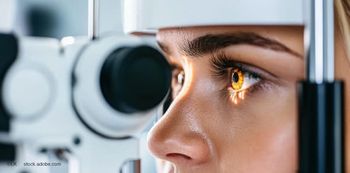
Temporary, repeatable hyperopic correction
For patients with low to moderate hyperopia who may be risk-adverse for surgical correction, there is a low-cost, non-invasive, pain-free procedure of 2.5 seconds, said James J. Salz, MD.
New Orleans-For patients with low to moderate hyperopia who may be risk-adverse for surgical correction, there is a low-cost, non-invasive, pain-free procedure of 2.5 seconds, said James J. Salz, MD.
The patient will also have immediate vision improvement after noninvasive keratoplasty.
The catch for patients is also the bonus for practitioners: the effect is temporary, gradually fading, which, if the patient desires, can lead to multiple re-treatments.
“The plan is to re-treat as they lose effect,” said Dr. Salz, clinical professor of ophthalmology, University of Southern California, Los Angeles.
As an example, one patient was treated with noninvasive keratoplasty 10 times over 5 years. Many patients maintain good results up to 2 years, he said.
Although Dr. Salz’s clinical trial is temporarily on hold due to protocols surrounding an equipment change, the U.S clinical trial for correction of low to moderate hyperopia by noninvasive keratoplasy has looked at 10 eyes.
Of these, zero adverse events or statistically significant changes were reported in corrected distance visual acuity, astigmatism, IOP, corneal thickness, endothelial cell density, ocular aberrations, or corneal sensitivity.
In terms of effectiveness, in post-primary treatment, the mean binocular uncorrected distance visual acuity was 20/25 or better; improvements were statistically significant through 24 months.
During noninvasive keratoplasty, the corneal epithelium is left intact, protected by a sapphire window, which acts as heat sink to protect from thermal damage.
For more articles in this issue of Ophthalmology Times Conference Brief click
To receive weekly clinical news and updates in ophthalmology,
Newsletter
Don’t miss out—get Ophthalmology Times updates on the latest clinical advancements and expert interviews, straight to your inbox.













































.png)


